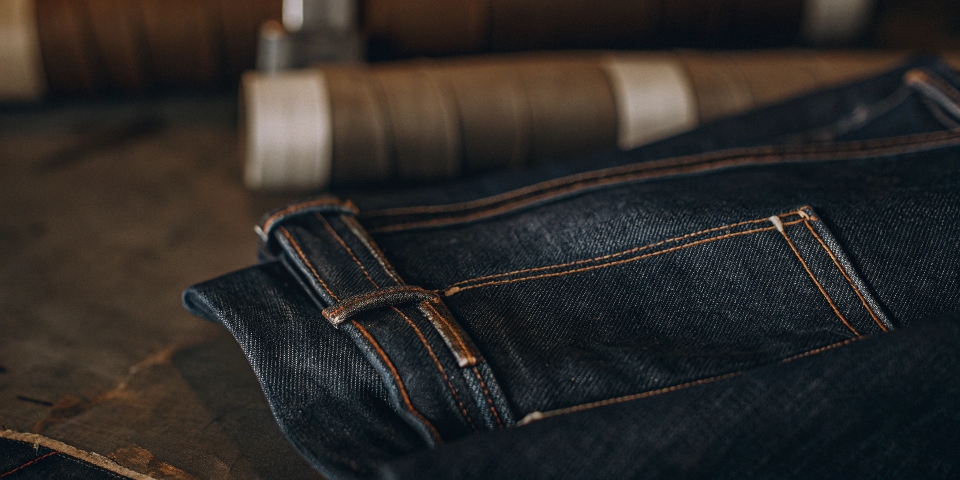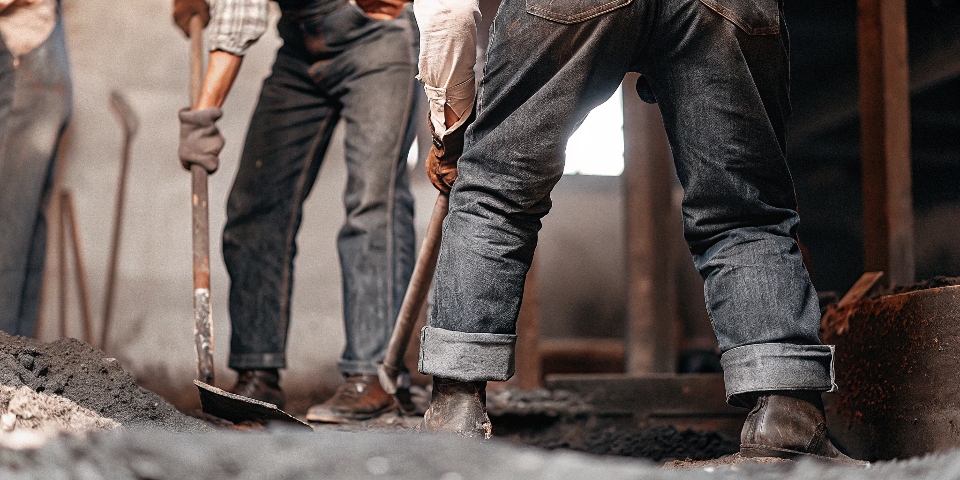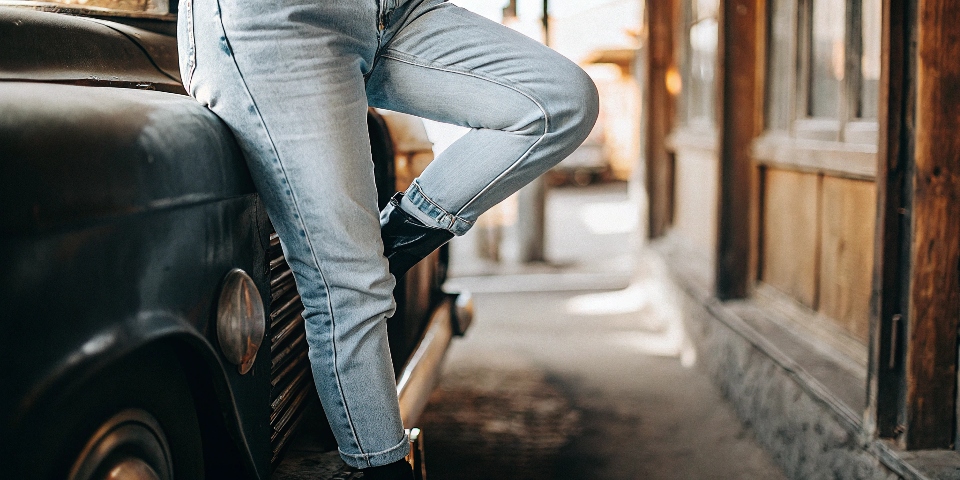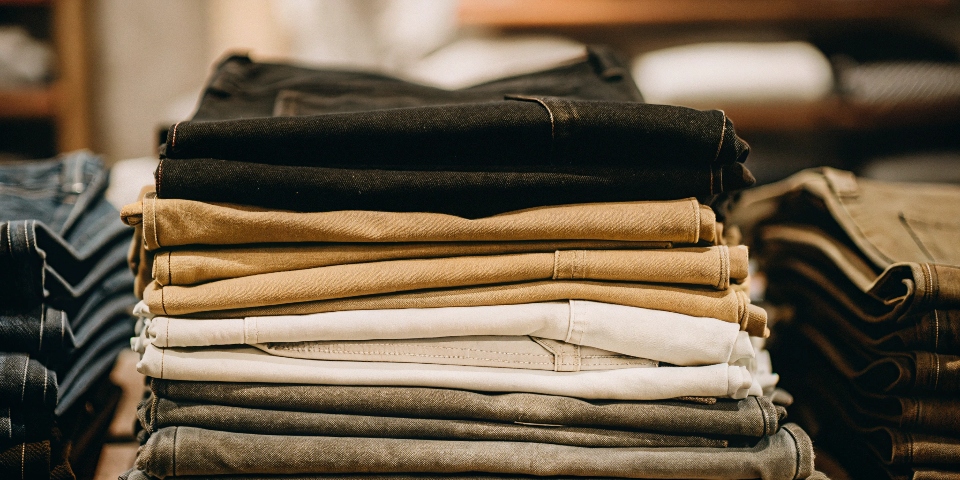You see them everywhere, every day. But have you ever stopped to ask why blue is the default color for jeans? It feels like a random choice, but the story behind it is a fascinating mix of chemistry, practicality, and history.
Jeans are blue because of the unique way indigo dye reacts with cotton. The dye sticks to the outside of the fibers instead of sinking in. This allows the jeans to fade over time, creating a personalized, worn-in look that has become iconic.
This simple chemical trick is the foundation of the entire denim aesthetic1. In my two decades running the DiZNEW denim factory, understanding how different dyes work is everything. I help designers like Dean harness these chemical properties to create the exact look they envision.
The story of blue isn't just about a color; it’s about a process that turned a simple work garment into a canvas for personal expression. Let’s look at how it all started.
Why were jeans originally blue?
You imagine miners in the 1870s needing tough work pants. The color seems like a secondary detail. Why did Levi Strauss and Jacob Davis settle on blue for their new, rugged trousers?
Indigo was chosen for the original jeans because it was cheap, readily available, and incredibly practical. The dark blue color was excellent at hiding dirt, and the unique fading properties made the stiff fabric softer and more comfortable with each wash.
The choice of blue was a purely practical decision, not a fashion one. In the 19th century, indigo was one of the few dyes that could hold up to the harsh conditions of manual labor. The real magic, though, is in the chemistry. Unlike most dyes that soak deep into the cotton fiber, indigo dye2 particles grab onto the surface of the yarn. This is key. For a miner, it meant the pants were a deep, dark blue that didn't show stains easily.
As they wore them and washed them, the dye particles on the surface would slowly chip away. This process physically softened the tough cotton fabric, making the jeans more comfortable over time. It was the perfect combination of features for laborers: strong, good at hiding dirt, and they got better with age. It was a functional choice that accidentally created a future fashion icon.
Why is blue the standard color for jeans?
You know blue was the original choice for practical reasons. But many things start one way and change. Why did blue stick around to become the undisputed, global standard for jeans?
Blue remained the standard because its unique fading characteristic, once a practical benefit, became a powerful cultural symbol. The way blue jeans aged and told a story on the fabric became a desirable aesthetic of authenticity and rebellion.
The reason blue became the standard has everything to do with culture. What started as a side effect of workwear—fading—became the main attraction. This shift began around the 1930s and exploded in the 1950s. Cowboys in Hollywood movies wore weathered blue jeans, making them look rugged and authentic. Then, cultural rebels like Marlon Brando and James Dean made faded denim3 the uniform of cool non-conformity.
The fades, whiskers, and honeycombs that developed on a pair of jeans were no longer just signs of wear; they were a record of a life lived. They made each pair unique to the person who wore them. This idea was incredibly powerful. By the 1960s and 70s, everyone wanted that perfectly worn-in look.
As a manufacturer, this is the magic designers are always trying to capture. We use techniques like hand-sanding and lasers to recreate the authentic fades that made blue denim a legend. Blue isn't just a color; it's a storytelling medium.
Why are jeans different colors now?
You see jeans in black, gray, olive, and even bright orange. If indigo is so special and iconic, how are all these other colors possible and why don't they behave the same way?
Jeans now come in many colors because we use different types of dyes4. For blacks, grays and earthy tones, we use sulfur dyes5. For bright, saturated colors like red or green, we use reactive dyes that chemically bond with the cotton.
While indigo defines classic denim, my factory, DiZNEW, handles a whole spectrum of colors using different dyeing techniques. The choice of dye all depends on the look the designer wants to achieve. Here is a simple breakdown:
| Dye Type | Primary Colors | Fading Properties |
|---|---|---|
| Indigo | Blue | Fades significantly, showing the white cotton core. |
| Sulfur | Black, Gray, Earth Tones | Fades, but often to a gray or brownish tone, not white. |
| Reactive | Bright, Saturated Colors | Minimal to no fading. The color is permanently bonded. |
Sulfur dyes are the workhorse for non-blue denim. They are cost-effective and produce great, deep blacks and other muted colors. They also fade with washing and wear, but their fade is different from indigo's. It's a softer, less contrasted fade. Reactive dyes are for when a brand wants a bold, bright color that lasts.
These dyes form a very strong covalent bond with the cotton fibers. This means the color is locked in and will not fade. So, if a designer brings me an idea for a pair of bright orange jeans, I know we need to use reactive dyes. The trade-off is that you lose that classic, story-telling fade that made jeans famous in the first place.
Conclusion
Jeans became blue because of the practical magic of indigo dye. This same magic, which creates a personal fade, transformed them from simple workwear into an enduring symbol of authentic style.
-
Discover how the denim aesthetic has evolved and its impact on fashion culture. ↩
-
Explore the fascinating chemistry behind indigo dye, the key to the iconic blue jeans we love today. ↩
-
Explore the appeal of faded denim and its significance in contemporary fashion trends. ↩
-
Learn about the various dye types used in jeans and how they affect color and fading. ↩
-
Find out how sulfur dyes are used to create non-blue denim and their fading characteristics. ↩










